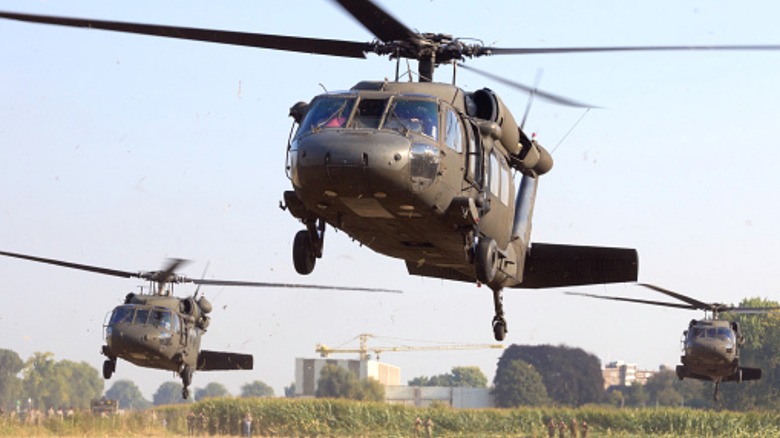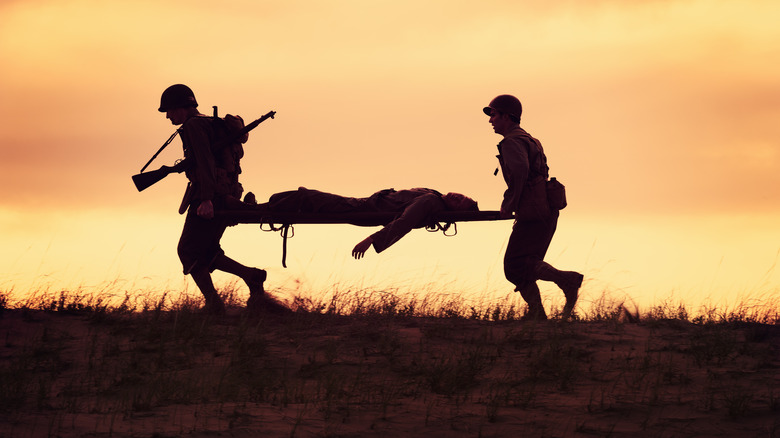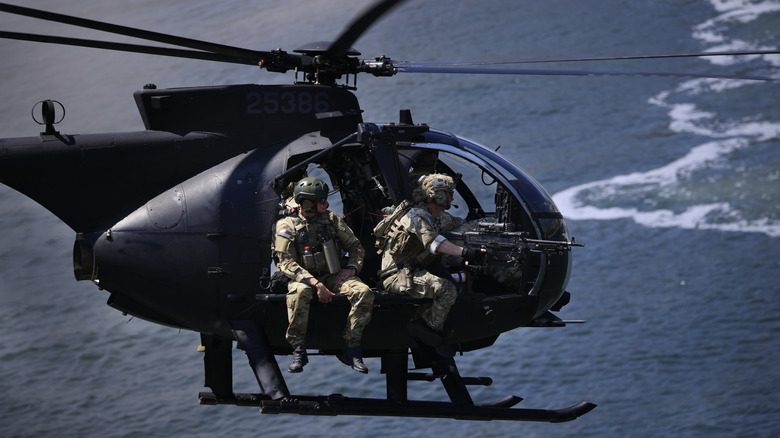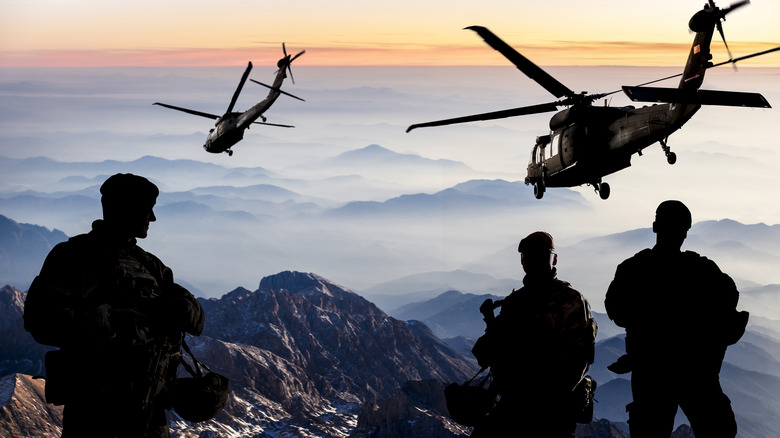
Vanderwolf-images/Getty Images
These days, helicopters are nearly ubiquitous, as they’re flown about cities by news crews, emergency medical personnel, and police. Hyundai is even building a flying taxi helicopter for Uber you could one day ride. Of course, helicopters aren’t solely used by civilian organizations and wealthy folks looking to get around a city. They’ve also been a significant part of military operations since George de Bothezat designed the first prototype for the U.S. Army in 1922. Bothezat’s helicopter could only withstand two minutes in the air, but it laid the foundation for the helicopters that were first used experimentally in World War II in 1944.
Helicopters were initially used to rescue wounded troops on the battlefield. While they still do that, they also take part in air assault raids, operate as infiltrators and attackers, conduct reconnaissance, and perform air interdiction. In May 2011, modified stealth choppers were used to infiltrate Osama Bin Laden’s compound in Pakistan.
It’s a helicopter’s versatility in and out of combat that make them such coveted aircraft, so it’s no wonder they’re used by pretty much any military capable of owning and operating them. When the U.S. Army first began using helicopters, it was clear they would change the face of land and air combat, and that’s precisely what they did. Helicopters are so important to modern military operations that their introduction completely changed how the U.S. Army fought in wars.
Military operations before the advent of the helicopter

Lifejourneys/Getty Images
There’s a clear line in history of how militaries operated before and after choppers became available. This is also true of the English longbow, the stirrup, and the atomic bomb: Essentially, any new technology that completely alters the landscape of military operations draws a line in the sands of history.
Before helicopters became available, wounded personnel on the battlefield had to be carried to a nearby aid station or mobile surgical hospital. While that’s still true today, in the past, these aid stations had to be on or near the front lines, endangering medical personnel and contributing to battlefield casualties. Helicopters mitigated this necessity by making it possible to takeoff and land almost anywhere to pick up casualties and fly them to safety.
Another area where helicopters are widely used is in engaging targets on the ground. There are a plethora of different types of helicopters in use today, including attack choppers. These provide close air support (CAS), and contribute to offensive military options in crowded or urban areas. While not always safe, this capability was entirely absent from battlefields of old, making the modern use of attack helicopters a pivotal element of any combat engagement today.
How helicopters permanently altered the U.S. Army

Luke Sharrett/Getty Images
Once helicopters became available for use, the Army wasted no time in utilizing them. During the Korean War, helicopters were used primarily to transfer wounded personnel from the battlefield to nearby hospitals. This is actually the setting of the ’70s and ’80s television show «M*A*S*H,» which follows a mobile Army surgical hospital (MASH) during the Korean War.
The first helicopter produced by the U.S. Army was the Sikorsky R-4. From there, the Army developed various helicopters, including the Bell UH-1, also known as the workhorse Huey helicopter used from the late 1950s until its last flight in 2016. That aircraft was ultimately replaced by the more robust UH-60 Blackhawk, which has survived in the U.S. Army for 40 years and remains in operation today.
With these and other helicopters working throughout Army operations at home and abroad, military tactics and doctrine changed to utilize them. Instead of airdropping hundreds of personnel using parachutes, the CH-47 Chinook or Blackhawk could fly to a target area, unload standard or air assault troops, and fly out while also providing cover via its door gunner. This tactic was employed heavily throughout the Vietnam War, and it remains the standard practice to this day.
The many helicopters operated by the U.S. Army today

Guvendemir/Getty Images
The U.S. Army isn’t kidding around when it comes to using helicopters, and that’s been true since the beginning. In fact, the Army has so many helicopters, they make up 41.2% of all military aviation across the board.
The U.S. Army has thousands of helicopters of various types in its inventory. The bulk of the Army’s helicopter inventory is taken up by the highly versatile Blackhawk. As of 2023, there were 2,135 Blackhawks, although the Army did announce it would reduce that stock by 8% to make room for new aircraft. Nevertheless, the Blackhawk is still the most produced and utilized military helicopter in the United States.
One of the reasons the U.S. Army relies so heavily on helicopters is their cost. Compared to something like the $18.8 million A-10 Thunderbolt used primarily to attack ground assets, choppers are cheap. Of course, that depends on the model, and there are many Blackhawk variations out there. To purchase one, the Army spends between $7.5 million to $25 million. Helicopters are also relatively easy to move from place to place, making it easier for the Army to use them in any theater of war while helping to maintain air superiority.